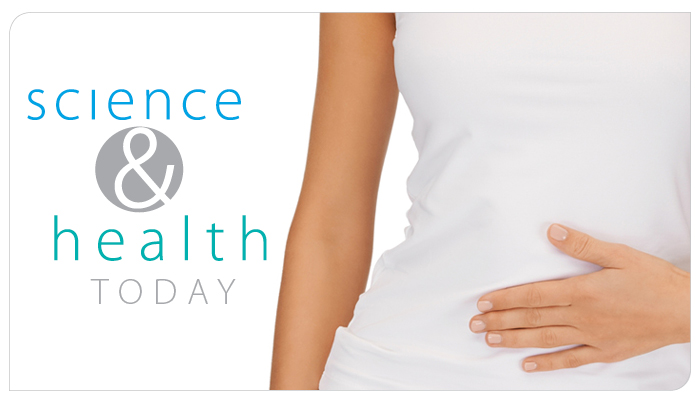
You are never alone. Everywhere you go you carry a diverse community of microbiota with you. Trillions of bacteria live in your mouth, lungs, gut, and on your skin. This is your microbiome. These bacterial cells outnumber your body’s cells about 10 to 1 and their bacterial genes outnumber your genes 100 to 1. Your health is interconnected with and dependent upon these tiny cohabitants. You are a walking ecosystem.
The Gut – It’s where the party’s at
Our largest microbial ecosystem is found in the gastrointestinal tract and can weigh about 2 to 3 lbs. We rely on these microbes to break down food, supply us with energy and nutrients and fight off harmful microbes. In return we provide them a place to live, and our diet affects the makeup of these communities on a daily basis.
For example, someone who eats a high-fibre, plant-based diet has more bacteria that specialise in breaking down plant fibre. However, the number of plant-digesting bacteria would be much fewer in the gut of someone who eats a high-fat diet or a diet high in processed foods, such as the Western diet. In fact, the Western gut has lost much of its diversity over the past century with the increasing hygienic standards for food processing.
The Gut Microbiome and Obesity
Which microbiota inhabit your gut and in what proportion may determine whether you struggle with obesity or not. The two major divisions of bacteria in the gut are Bacteroidetes and Firmicutes. Obese people have less bacterial diversity within their gut and a greater proportion of Firmicutes to Bacteroidetes. Studies of bacterial transplants in mice have shown that the bacteria of obese mice transplanted to the guts of mice without bacteria cause them to overeat and gain weight. It has been found that some species of bacteria actually send out signals to make us hungry and affect the way we store fat.
Microbiome research is still a new science and there are many complex questions yet to answer. Researchers believe that health problems can occur when the balance of friendly bacteria in the gut is disturbed. So what can we do with the info available to help our microbes (and ourselves) stay healthy?
Probiotics = For Life
The name “probiotics” comes from the Latin pro, meaning “for”, and the Greek biotic, meaning “life”. Probiotics are live microorganisms, such as bacteria, that are beneficial to the health of their host (you) and may be ingested to improve the community of microbiota in the gut. The idea of ingesting “good” bacteria may have at first given you pause, given the message we all grew up with that all germs (or microbes) are bad and we must try rid ourselves of them.
However, this idea of ingesting beneficial bacteria is not new. Back in 1907, Nobel Prize recipient Elie Metchnikoff first put forth the idea that we could replace the harmful microbes with helpful ones when he observed the long, healthy lives of a Bulgarian community that consumed fermented milk products. Around the same time, a French paediatrician, Henry Tissier, observed a type of “bifid” bacteria that were abundant in the stools of healthy children and lacking in the stools of children suffering from diarrhea. He also suggested that giving these bacteria to the sick patients could improve their gut flora.
Adding more friends to the party in your gut
You can get probiotics from fermented foods like kimchi, sauerkraut, yogurt, or kefir. Foods with live cultures have been eaten safely for centuries. Probiotics can also be ingested in the form of supplements. The two most studied groups of bacteria identified as beneficial are lactobacillus and bifidobacterium.
Another way to help our good bacteria out is to give them lots of non-digestible fiber compounds, or prebiotics. These compounds are not digested in the stomach or upper intestines, but pass through to the lower intestines where bacteria grow on them. Prebiotics increase the presence of bifidobacteria and lactic acid bacteria. You can get prebiotics from foods like raw onions, leeks, garlic, and chicory root. Prebiotics can also be taken in supplement form.
Our microbes greatly outnumber us and perform essential tasks to support our health. Maybe we should keep them in mind next time we’re at the grocery store.
A Note from Dr. Carl: Making sure your friends are flourishing
The microbiome is an exciting frontier of science that holds much promise for bettering our understanding of human health. Evidence shows that probiotics can improve and maintain the health of our intestines. Thousands of studies suggest that probiotics may be helpful in fighting ailments related to the gut and in maintaining a strong immune system. It’s important to consult your physician before taking probiotics, especially people with weakened immune systems or serious illnesses.
Reliv provides both probiotics and prebiotics to support a healthy gut microbiome. ReversAge® contains Lactobacillus Acidophilus and Bifidobacterium Bifidum. Several Reliv products contain the prebiotic inulin, including Reliv Now®, Reliv Now for Kids, ReShape® and FibRestore®.
So optimize your personal ecosystem by sharing Reliv with the friends you carry with you.
To your health,
Dr. Carl W. Hastings
Vice Chairman and Chief Scientific Officer
Reliv products are not intended to diagnose, treat, cure, or prevent any disease.